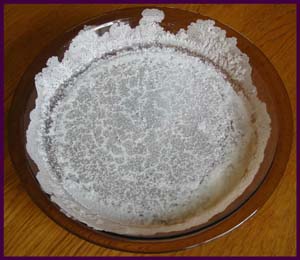5000 Baby Polar Bears
Hello,
Our Kids Science Newsletter is published each month during the school year. This Kids Science Newsletter includes a question of the month, current science events, science trivia and a simple science activity that is fun for everyone.
Question of the Month
What causes ocean waves?
(answer follows the simple science experiment)
Science Current Events
- 5000 Polar Bear Cubs
- Five thousand polar bear cubs were born around New Year's Day this year. Polar bears time the births for the extreme conditions that are found the Arctic at this time of year. The polar region is blanketed by some of the coldest and darkest conditions of the year. World Wildlife Fund that counted the baby cubs said there are between 20,000 and 25,000 polar bears alive today. They typically live for about 25 years.
- Sun's Magnetic Poles Switch
- The Sun's magnetic poles did a complete solar reversal during the last days of 2013. The magnetic reversal happens during the midpoint of Solar Cycle 24. The number of solar storms during this cycle has remained about the same. Generally during a solar cycle powerful eruptions occur on the Sun sending out massive clouds of superheated particles into space. This cycle contained the weakest storms ever recorded or observed by scientists living today.
- Chinese Roaches Escape
- Chinese use roaches in some of the traditional medicine. More than 1.5 million roaches escaped from a breeding facility in the late summer. The roaches infested nearby farms and homes after their escape. People living near the facility are afraid the roaches will cause them to get diseases as the animals inundate their homes.
- Hubble Space Telescope Look Deeper Into Space
- The Hubble Space Telescope is looking at much earlier and further away galaxies than it has ever before. The aging telescope is looking at galaxies that are smaller and all the stars are a bright blue. The new pictures released on January 7, 2014 show 3,000 galaxies which were mostly 1,000 times smaller than our Milky Way.
Science Trivia
- Electricity builds up in a thunder cloud and is released as a brilliant flash of lightning. A "leader stroke zig-zags to the ground. It forms a narrow path for the return stroke (the one you see) to race up. Lightning can go from clouds to the ground or from cloud to cloud.
- In some places there are about as many insects in one square mile as there are people on the entire planet.
- The South Pole is the coldest place on our planet because of the ice sheet that covers the continent. The surface of the ice sheet is more than 1.24 miles above sea level where the air is thinner and colder. The ice sheet makes the continent of Antarctica the highest continent.
- All elephants walk on tip-toe because the back portion of their foot is made up of all fat and no bone. Elephants can also swim. They have been found swimming miles from shore in the Indian Ocean.
Simple Science Activity
Salt Playa
Introduction
The Bonneville Salt Flats are the remains of a large inland lake. The flat lakebed covered with salt is used to race cars on the level surface. In this activity you will create a salt flat using table salt.

Materials
- Measuring cup
- Table salt
- Hot water
- Spoon
- Pie plate
Directions
- Pour 1 cup of hot water from the tap into a measuring cup.
- Stir in two spoons of salt into the water.
- Continue adding salt to the water until no more will dissolve.
- Pour the water into the pie plate.
- Set the pie plate on a shelf or near a sunny window to watch the playa develop.
- You can use a magnifying glass or other small lens to look at the crystals that formed when the water evaporated.
- The slower the water evaporates the larger the crystal will grow.
Science behind the experiment
The southwest part of the United States has many areas where rivers flow into areas forming lakes without an outlet. The river water carries dissolved salts in the water when rock weather. If the lakes dry up the water evaporates leaving behind the dissolved salts that crystallize on the lake floor. Playas are former lake beds that have dried up often leaving behind salt beds.
Answer to the question of the month
What causes ocean waves?
Most of the ocean waves are caused by the wind. Air moving across the water pushes it until it piles up into a small wave. Flying across the ocean you can see white caps as the wind creates small waves. Other ocean waves known as tsunami are created during large earthquakes. Tsunami waves can also be produced when a large landslide occurs and falls into a bay in the ocean. On July 9, 1958 a landslide caused a tsunami wave in Lituya Bay that was 1,719 feet high.
Links to our back issues of Kids Science Newsletter
Our Other Websites
Ring of Fire Science
Science Kits for Kids
Kids Earth Science
Please share this newsletter with a friend by forwarding it to them. If you know of a group who might enjoy the newsletter please let them know about it also.
Comments? Ideas? Feedback? I'd love to hear from you. Just reply to this Just For Kids Science Newsletter and tell me what you think!
Sincerely yours,
Myrna Martin

